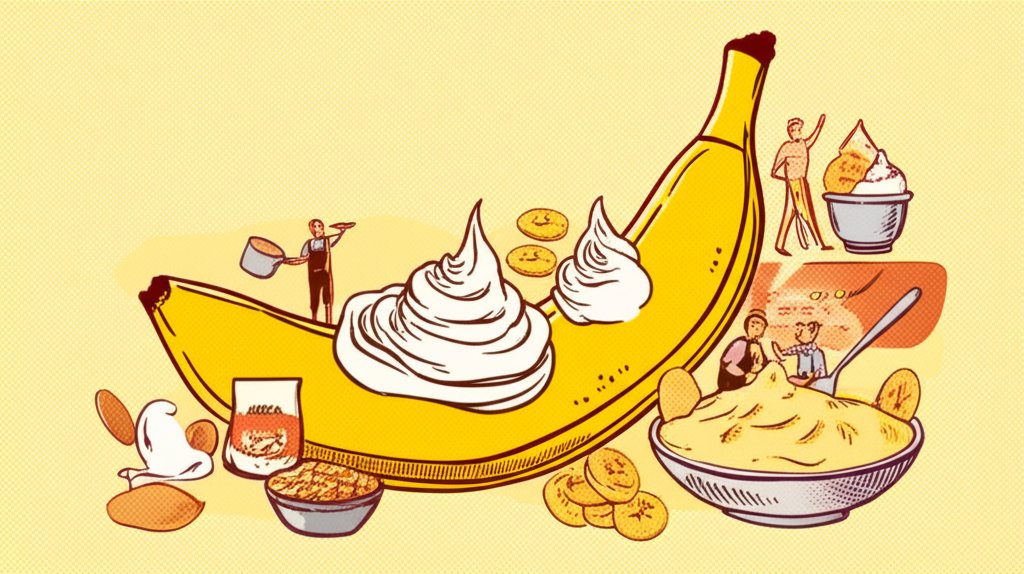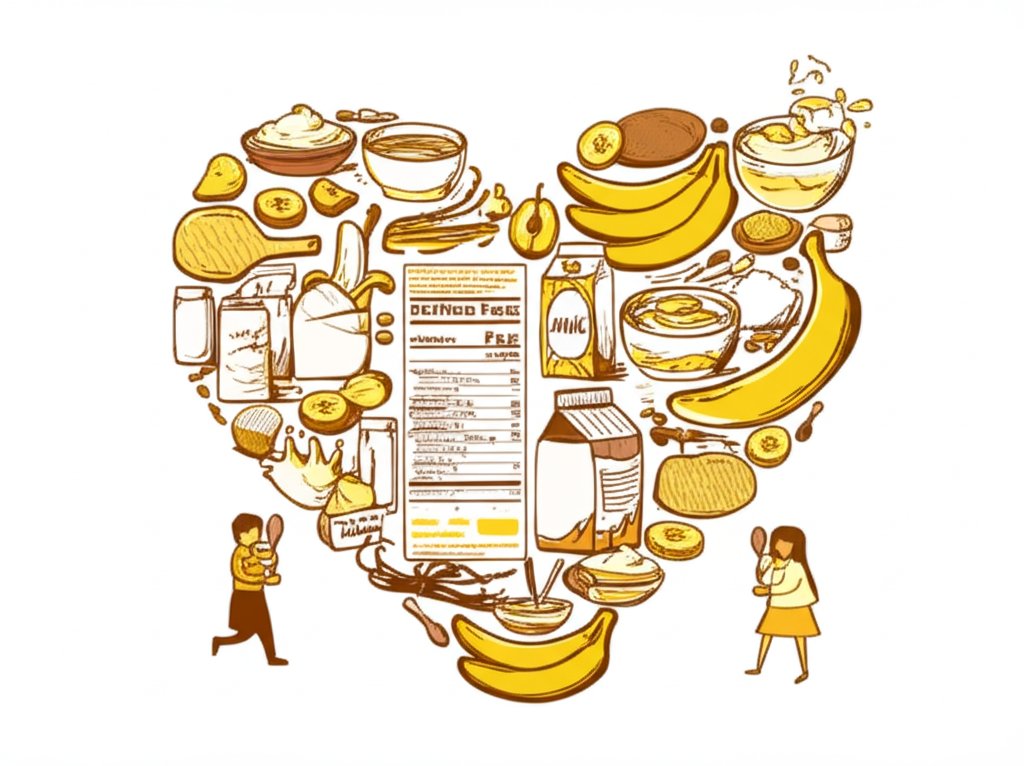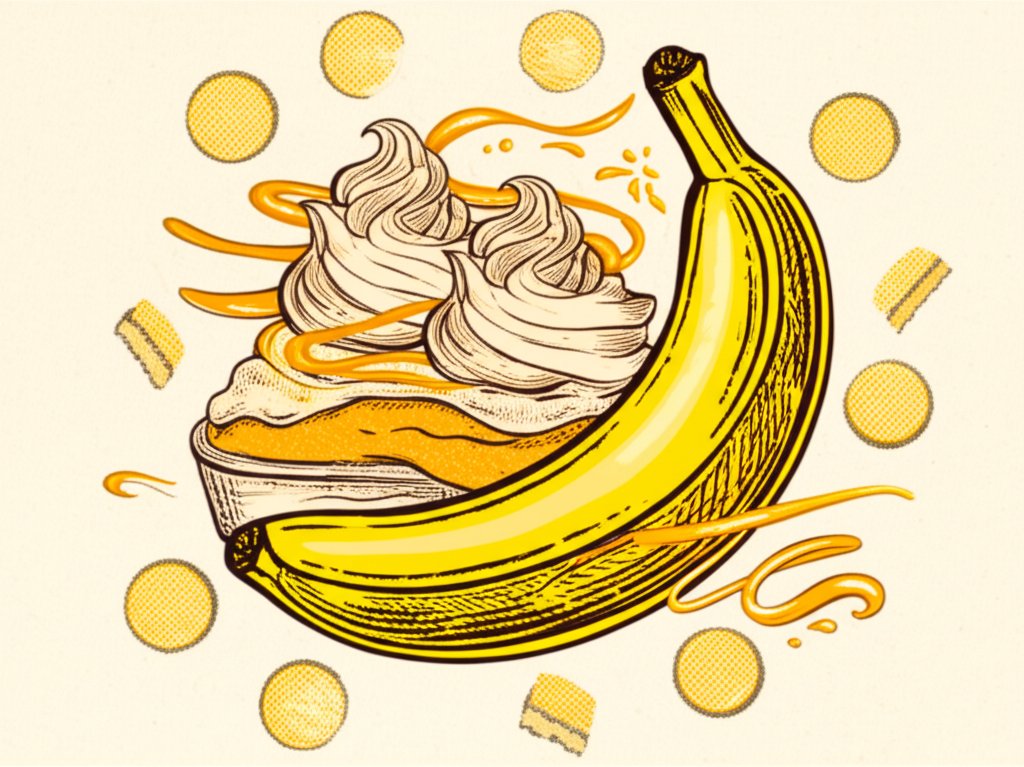Banana Pudding Nutrition Facts: What’s In a Sweet Treat?
Craving a spoonful of creamy, sweet banana pudding? Before you dive in, let’s peel back the layers and explore the banana pudding nutrition facts to understand exactly what this classic dessert brings to the table. Is it a sometimes treat, or can it be part of a balanced diet? The answer, as always, lies in the details.
At a glance:
- We’ll break down the key nutritional components of banana pudding.
- You’ll learn how ingredients impact the overall health profile.
- We’ll explore ways to make healthier swaps and portion control.
- You’ll be able to confidently enjoy banana pudding mindfully.
- We’ll address common questions and misconceptions about banana pudding.
Unpacking the Ingredients: What Makes Up Banana Pudding?
Banana pudding’s nutritional profile varies considerably depending on the recipe. The core ingredients usually include:
- Bananas: Provide potassium, vitamin B6, and some fiber. Ripeness impacts sweetness.
- Vanilla Pudding: Packaged mixes are common; ingredients usually include sugar, modified cornstarch, and artificial flavors. From scratch pudding often involves eggs, milk, sugar, and vanilla extract.
- Sweetened Condensed Milk: Adds significant sugar and calories.
- Whipped Cream or Topping: Can contribute fat and sugar, depending on whether it’s homemade (heavy cream and sugar) or store-bought (often containing stabilizers and artificial flavors).
- Vanilla Wafers: These cookies contribute carbohydrates and added sugar.
Each ingredient plays a role in the final nutritional outcome, and simple substitutions can dramatically shift the overall profile.
Banana Pudding Nutrition Facts: A Closer Look at the Numbers

A typical serving (about 1 cup) of classic banana pudding prepared with store-bought pudding mix, sweetened condensed milk, and whipped topping might contain:
- Calories: 300-400
- Total Fat: 15-25g (depending on the whipped topping)
- Saturated Fat: 8-15g (primarily from dairy)
- Cholesterol: 50-75mg
- Sodium: 200-300mg
- Total Carbohydrates: 35-50g
- Fiber: 1-2g (mostly from bananas)
- Sugars: 25-35g (mostly added sugars)
- Protein: 3-5g
Example: Imagine a scenario where someone eats banana pudding as an after-dinner dessert three times per week. With the above values, they’re consuming an extra 900-1200 calories and a significant amount of added sugar.
Ingredient Swaps for a Healthier Pudding
Modify your recipe to create a more nutritious version of banana pudding.
- Reduce Added Sugars: Opt for a pudding recipe that relies on the natural sweetness of ripe bananas. You can also reduce the amount of sugar called for in the recipe gradually over time.
- Choose Healthier Fats: Substitute heavy whipping cream with a lighter option like Greek yogurt or a plant-based whipped topping.
- Increase Fiber: Incorporate more bananas or add a sprinkle of flaxseed or chia seeds for a subtle fiber boost.
- Use Whole Grain Wafers: Opt for whole grain vanilla wafers, which provide more fiber than the traditional kind.
- Control Portion Sizes: Use smaller bowls or cups to help manage portion sizes.
These simple swaps can dramatically reduce the sugar and fat content while boosting the nutritional value of your banana pudding.
Mastering Portion Control: A Practical Guide
Even healthier versions of banana pudding are best enjoyed in moderation. Here’s a practical guide to portion control:
- Measure Your Servings: Use measuring cups to ensure you’re sticking to a reasonable portion size (e.g., ½ cup or ¾ cup).
- Pre-Portion: Divide the finished pudding into individual containers for easy grab-and-go snacking and to avoid overeating.
- Mindful Eating: Savor each bite slowly, paying attention to the flavors and textures. This can help you feel more satisfied with a smaller portion.
- Balance with Other Foods: Enjoy banana pudding as part of a balanced meal that includes protein, fiber, and healthy fats. This can help stabilize blood sugar levels and prevent cravings.
Comparing Store-Bought vs. Homemade: The Nutrition Showdown

Store-bought banana pudding often relies heavily on processed ingredients, added sugars, and artificial flavourings. In contrast, homemade banana pudding allows you to have complete control over the ingredients, enabling you to choose healthier options.
Here’s a quick comparison:
| Feature | Store-Bought Banana Pudding | Homemade Banana Pudding |
|---|---|---|
| Sugar Content | High (often from refined sugars) | Can be controlled (using less sugar or natural sweeteners) |
| Fat Content | Varies (often from processed oils) | Can be controlled (using healthier fats) |
| Additives/Preservatives | High (artificial flavors, stabilizers) | Minimal to none |
| Nutritional Value | Lower (fewer vitamins and minerals) | Higher (depending on ingredient choices) |
| Cost | Generally cheaper | Can be more expensive depending on ingredients |
| Making your banana pudding opens the door to experimenting with healthier swaps. This relates to choosing healthy ingredients for any dish. Baked beans, for example, are a reliable pantry ingredient. You can explore Are baked beans nutritious? and learn about their low calorie and high vegetable content. |
Banana Pudding and Digestive Health: What to Expect
Banana pudding is not typically associated with significant digestive benefits. However, the bananas provide some fiber, which can promote regularity. The high sugar content, especially in store-bought versions, can disrupt gut bacteria balance and potentially lead to digestive discomfort in some individuals.
People who are sensitive to dairy may also experience bloating or gas, depending on the ingredients.
Q&A: Common Questions About Banana Pudding Nutrition
- Is banana pudding a good source of potassium? Bananas are a good source of potassium, but the overall potassium content in banana pudding is diluted by other ingredients.
- Can I make banana pudding diabetic-friendly? Yes, by using sugar substitutes, low-fat dairy products, and whole-grain wafers.
- Is banana pudding a healthy snack for kids? In moderation, a homemade version with reduced sugar can be an occasional treat. Focus on whole fruits and vegetables as primary snack options.
- Does banana pudding contain gluten? Traditional banana pudding made with vanilla wafers contains gluten. However, you can make a gluten-free version by using gluten-free wafers.
- How long does banana pudding last? Usually 3-4 days in the fridge.
Actionable Steps: Enjoying Banana Pudding Mindfully
Ready to enjoy banana pudding as part of a balanced lifestyle? Here are actionable steps you can take today:
- Choose Homemade: Opt for homemade banana pudding to control ingredients and reduce added sugars and unhealthy fats.
- Make Healthier Swaps: Experiment with ingredient substitutions like Greek yogurt, sugar substitutes, and whole-grain wafers.
- Practice Portion Control: Measure your servings and pre-portion the pudding to avoid overeating.
- Enjoy Mindfully: Savor each bite and pay attention to your body’s hunger and fullness cues.
- Balance Your Diet: Incorporate banana pudding as part of a balanced meal plan that includes plenty of fruits, vegetables, protein, and healthy fats.
By following these steps, you can enjoy the classic flavor of banana pudding without compromising your health goals.
- Male Eating Disorders Often Missed but Increasingly Prevalent - October 29, 2025
- Males With Anorexia Nervosa Have Distinct Symptoms and Treatment Needs - October 28, 2025
- Weight Loss for Men Builds Habits for Lasting Success - October 27, 2025










